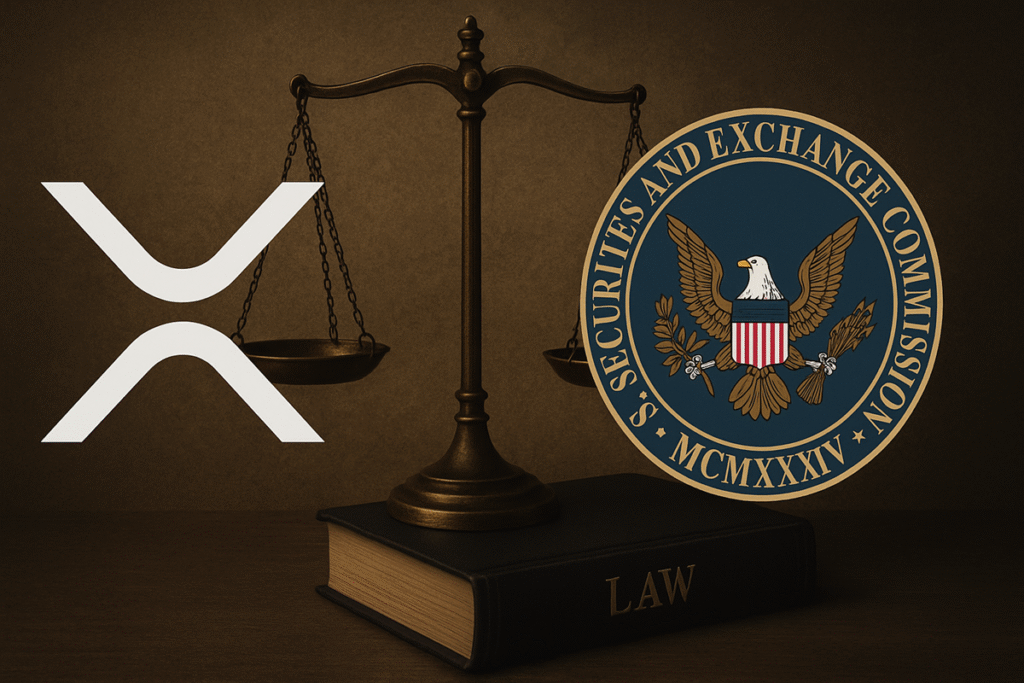In a dramatic development that could reshape the landscape of cryptocurrency regulation, Ripple Labs Inc. and the U.S. Securities and Exchange Commission (SEC) have approached Judge Analisa Torres with a compelling appeal aimed at resolving their extended legal battle over XRP. The case, which has persisted for almost five years, finds both parties eager to conclude the proceedings. A joint letter submitted recently to the Southern District of New York seeks to lift the injunction placed upon Ripple and release a significant portion of the $125 million held in civil-penalty escrow, marking a pivotal moment that may finally end the litigation.
XRP Legal Proceedings: An Imminent Conclusion?
Ripple and the SEC have invoked the Federal Rules of Civil Procedure 62.1 and 60(b)(6) in their latest submission, having previously faced rejection in May for not meeting the stringent conditions necessary to modify a final judgment. This renewed filing asserts “exceptional circumstances” that justify altering the Final Judgment. The parties highlight the importance of settlement efficiency, the preservation of judicial resources, and the SEC’s shifting priorities in cryptocurrency enforcement as critical components of their argument.
Under the fresh proposal, Ripple is set to remit $50 million to the SEC, which would constitute full settlement of the penalty, while the remaining $75 million plus interest would be returned to the company. Additionally, the permanent injunction instated in August 2024 due to supposed violations of the Securities Act’s Section 5 would be rescinded. Both parties underscore that this compromise is vital for a settlement and propose, should the indicative ruling be issued, to request a limited remand from the Court of Appeals, allowing the district court to finalize the relief and enabling the dismissal of pending appeals.
The joint letter reviews the case’s procedural backdrop, dating back to a landmark ruling by Judge Torres in mid-2023. This decision partially favored the SEC, finding Ripple’s institutional sales of XRP in violation of federal securities laws, while ruling programmatic sales on crypto exchanges were not investment contracts. The case’s dynamics shifted further after claims against Ripple executives were dropped, resulting in the $125 million penalty and subsequent injunction.
After both parties filed appeals in late 2024, proceedings were paused in April 2025 to facilitate a potential settlement. However, a previous request for indicative ruling was denied due to insufficient justification under Rule 60(b)(6). In their latest submission, Ripple and the SEC cite precedent from Second Circuit cases—Microsoft Corp. v. Bristol Tech. and Major League Baseball Props. v. Pacific Trading Cards—to argue that altering a court judgment can be essential to settlement, promoting judicial economy.
Public interests, the letter claims, remain protected, as the substantive summary-judgment ruling will continue to stand. Proposed changes are limited to penalty adjustments and injunctive relief, which the parties argue reflect the unique nature of this case and possess minimal precedential impact.
Awaiting Judicial Resolution
The decision now rests with Judge Torres to determine if the outlined factors meet the “exceptional circumstances” requirement. If the judge is inclined to grant the relief sought in the XRP case, Ripple and the SEC will request the Second Circuit to return the case for an amended judgment, paving the way for appeal dismissals. Alternatively, the litigation could resume its appellate course, extending a dispute initiated when the SEC first filed suit against Ripple in December 2020. The ruling will not only influence the immediate handling of the escrowed funds but also impact Ripple’s regulatory future.
As this pivotal decision looms, XRP trades at $2.11, reflecting market anticipation of a possible resolution.
FAQs
What is the significance of the XRP lawsuit settlement?
The potential settlement between Ripple and the SEC could bring clarity to the regulatory landscape for cryptocurrencies. A resolution may impact how other digital assets are classified and regulated, influencing future enforcement actions.
What could happen if the court rejects the current motion?
Should the court deny the joint motion, the legal battle would likely continue on the appellate track, prolonging uncertainty for Ripple and the XRP market. This continuation could delay any regulatory resolutions and affect market confidence.
How might this case affect the broader cryptocurrency market?
The outcome of the Ripple-SEC lawsuit could set significant precedents for how digital assets are handled under U.S. securities law. A favorable settlement could encourage innovation and investment in the crypto space, whereas continued litigation might cause hesitancy among investors.
The unfolding of this legal saga remains a critical focal point for investors and regulators alike, potentially shaping the future of digital assets in the financial ecosystem.

